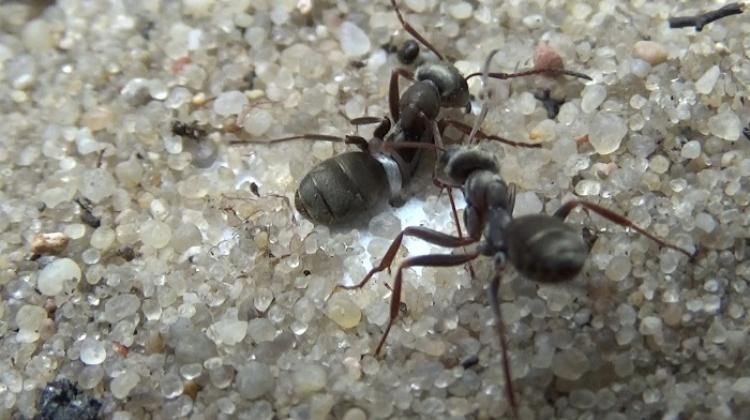FoodSniffer will sniff hazardous compounds in food

It will sniff mold in beer and cereal products, allergens in milk, pesticides in grapes and wine. Small appliance for smartphone developed by scientists from Kraków will need just a few seconds to check if your food and drink are safe.
Currently tests for the presence of hazardous compounds are carried out almost exclusively in specialized laboratories, they are expensive and usually take few days. The answer to quick analysis of food can be FoodSniffer - a device that is being developed by an international team of scientists. Project participants include researchers from the Jagiellonian University and AGH University of Science and Technology in Kraków.
"Foodsniffer is a small appliance for smartphones, to which used will drip a small amount of liquid: juice, beer, water used to flush lines. After a few seconds to a few minutes it will return the result, confirming whether harmful substances are present in our food" - told PAP Dr. Jakub Rysz from the Institute of Physics of the Jagiellonian University.
Researchers want to first test the device on several types of products and chemical substances of different origins. They may be pesticide residues in grapes and wine, toxins produced by fungi in cereal and beer, allergens in the water used to wash food, casein in cow milk that causes allergy. According to the assumptions, the device should detect any compound, even at very low concentrations, which may pose a threat to humans.
The device can be used in agriculture, in the production process, until the last step, in stores. It could be used by agencies which supervise the food production and distribution.
"This product is not for highly specialized laboratories, but for everyone. We want a smartphone application to return a clear, simple and readable test result, indicating whether the substance is present in a given product" - explained the scientist.
The device will transfer data to experts who can confirm whether the concentration of the substance requires the product withdrawal from the market. It is also planned to create a central European database, which will collect the information obtained from the devices.
FoodSniffer has three components. Its "heart" is a tiny optoelectronic chip, coated with special compounds that have the ability to capture harmful substances. This solution is being developed by scientists from Kraków. The chip would be inserted into a larger device attached to a smartphone. The final component is an application that controls the appliance.
Coordinator of the project - full name "FOOD Safety at the point of Needvia monolithic spectroscopic chip identIFyingharmFul substances in frEsh pRoduce" - is a Greek research centre. The work involves scientists from Germany, Holland, France, Spain, Finland.
"We already cooperate with institutes directly involved in the study of food and with food distributors\' organizations. They disseminate information about our work among their customers. We do not have an end user yet" - explained Dr. Rysz.
Work on the device is described in Projektor Jagielloński 2, available at: www.projektor.uj.edu.pl
PAP - Science and Scholarship in Poland
ekr/ agt/ mrt/
tr. RL
Przed dodaniem komentarza prosimy o zapoznanie z Regulaminem forum serwisu Nauka w Polsce.
















